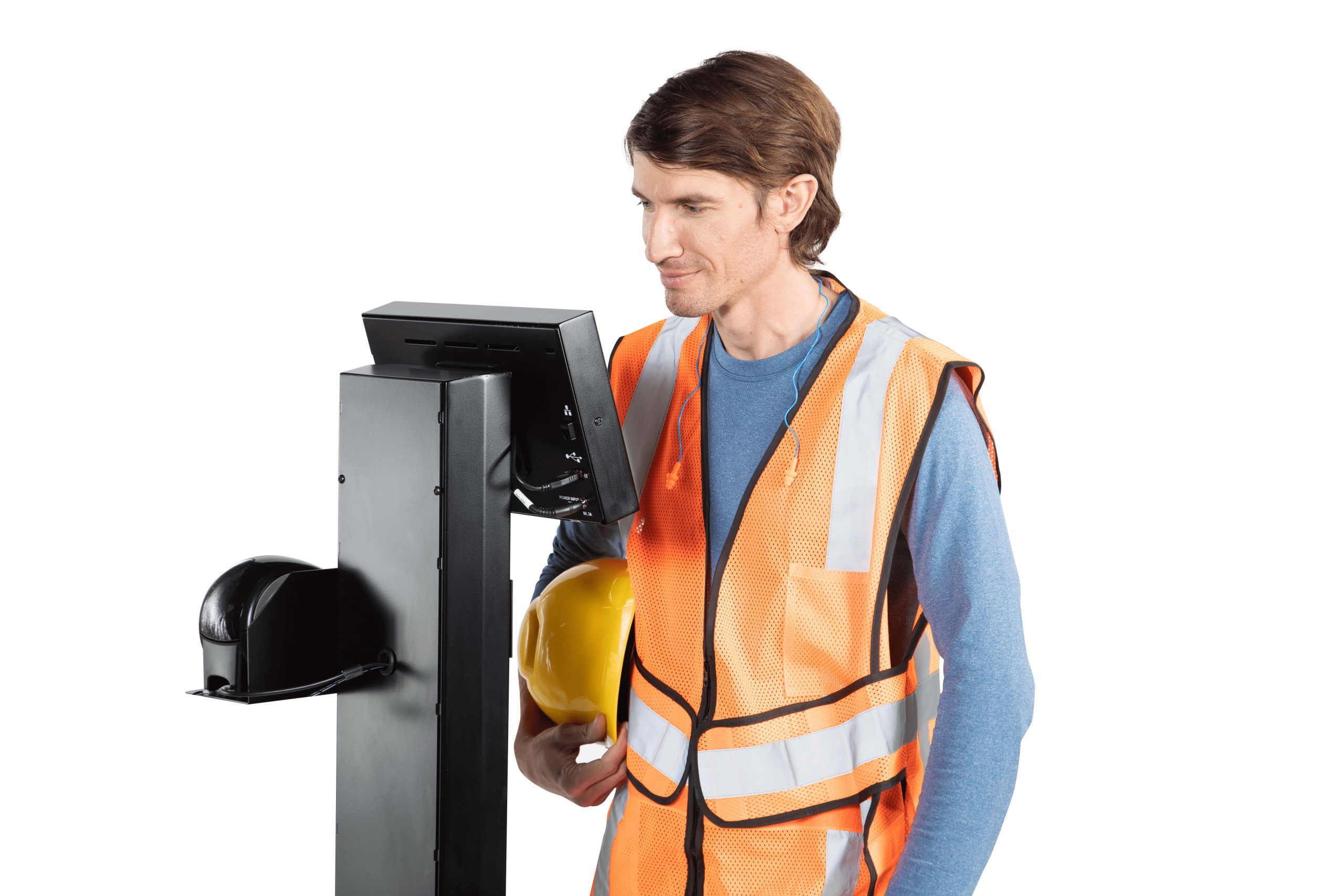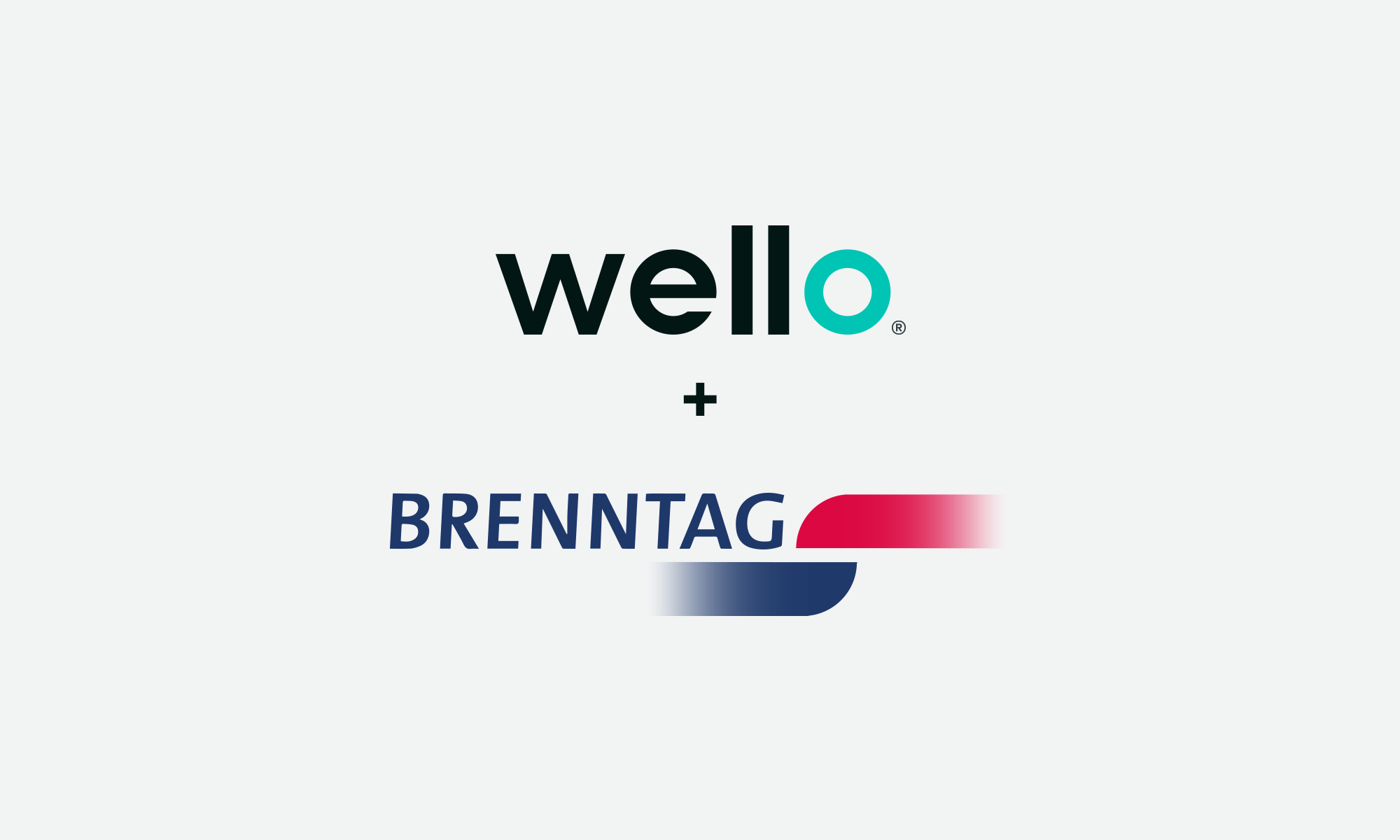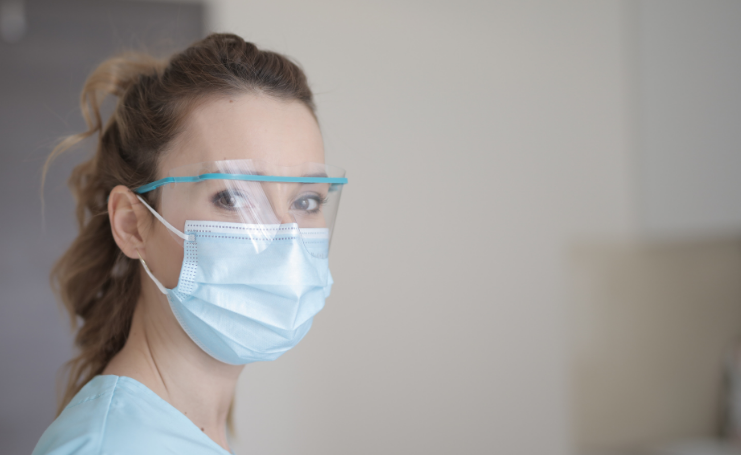Fever is the leading indicator of infection in COVID-19 and other common contagious illnesses. To help employers protect staff and patrons of their facilities, we’re sharing best practices for implementing a temperature screening program—download our comprehensive guide here.
The conversation around employee health and safety is shifting. Many companies are realizing that temperature screening is a valuable strategy to help lower risk of infection in the workplace, but are uncertain of the best way to implement it.
To safely and efficiently screen employees for elevated temperatures, organizations must create clear policy guidelines, choose the most accurate and well-vetted clinical thermometers, and effectively communicate the importance of temperature screening to employees.
Putting together temperature screening protocols
Daily temperature readings are the most important factor in temperature screening in the workplace. Each employee should have their temperature taken quickly when they arrive at work, without potential exposure to contagion, and allowed to enter only if they scan within the threshold.
Deciding what counts as a fever
While the CDC’s definition of a fever is 100.4° F, many contagious illnesses that cause disruptions or outbreaks in the workplace can cause sub-acute fevers, between 99.5° F and 100.3° F. For this reason it’s best to set a threshold of 99.5° F, a standard that minimizes the potential for harmful false negatives.
What to do when someone scans above the threshold
If an employee scans above the temperature threshold, they should leave the workplace. While some employers allow staff to wait for a specified time period and get screened a second time, those who still scan high should follow CDC guidance and wait until they meet criteria for returning to work. Employers may want to follow up periodically with sick employees while they are on leave to check in on their condition and provide guidance on company policy.
Complying with local requirements
Some guidelines apply to all organizations. For example, employees may only undergo temperature screening as long as the protocols apply to everyone equally. Others vary by state and are ever-evolving. Ensure you’ve researched regional and industry requirements on whether temperature screening is mandatory to stay operational, what you can enforce as part of a hiring agreement, and how that data can be used to keep employees safe.
Making employees feel at ease
Employers should provide adequate time for employees to get comfortable with their new regulations. Before launching a new program, explain how your chosen temperature screening devices were selected and answer any questions on how the process works.
Once a temperature screening program is launched, place devices in the right quantity and area to keep scanning wait times low. Try to stagger shift and arrival times to reduce the chance of bottlenecks in high-traffic areas.
Many companies ask those who scan below the threshold to wear a sticker or badge that shows they’ve been screened for elevated temperature. When employees wear badges, it can increase the confidence of those around them and improve their ability to focus on work.
Choosing the most accurate temperature screening kiosk
The most effective devices for preventing the spread of contagious illness are self-serve, contactless, clinical thermometer stations that use medical-grade infrared sensors to measure body temperature. These devices avoid the common pitfalls of other options, including handheld thermometers and thermal cameras—handhelds expose operators to potentially contagious employees and let sick employees slip through the screening process, while thermal cameras pose similar risks to operators and have too many restrictions to provide the level of accuracy needed in a workplace setting.
At minimum a temperature screening device will come with software that allows employers to log in and view the results of each day’s scans, as well as receive automated alerts when an employee scans above the threshold. Additional features should include:
- Track baseline temperatures over time
- Add departmental and vendor information
- Manage complexity and compliance requirements through organized data
- Integrate with the employer’s time and attendance solution
- Make it easy to follow up with sick employees and get them safely back to work
Wello’s clinical thermometers are the only FDA-cleared, contactless clinical thermometer that is fully automated, meaning no operator is required to take employee temperatures. Here’s how our welloStationX kiosks compare against other options:

Four common pitfalls to avoid
When done correctly as part of a well-documented health and safety program, temperature screening is a safe, non-intrusive way to help keep employees safe from disease spread. When creating your program and choosing a device, make sure to avoid these common mistakes:
- Requiring an staff member, nurse, or camera operator to operate the thermometer. Handheld devices put staff on the front lines needlessly, placing them in the vicinity of hundreds of potentially infected people each day, while thermal camera need someone nearby operating a laptop.
- Allowing potentially devastating false negatives. When the device is only monitoring for people who scan above 100.4° F, false negatives can lead to outbreaks. Choose a device that can reliably scan for even slightly elevated body temperatures.
- Creates long lines or bottlenecks while people wait for screening. If too many people gather in close proximity, risk increases.
- Opting for a device that isn’t FDA-cleared and of clinical-grade quality. Inaccurate devices do more harm than good, wasting time and creating a false sense of security while allowing for false negatives.
Help keep risk low with Wello
The losses incurred from contagious illness spread in the workplace can be catastrophic, especially for companies that rely on hourly-wage workers to keep operations running efficiently. A temperature screening program using highly accurate devices can help protect employees from risk and build a lasting culture of health and safety in the workplace.
Learn more in by downloading A guide to employee temperature screening: safe & effective protocols to prevent infection in the workplace. In it you’ll find recommendations on choosing the best equipment, getting accurate results, and following legal, compliance, and change management best practices.


